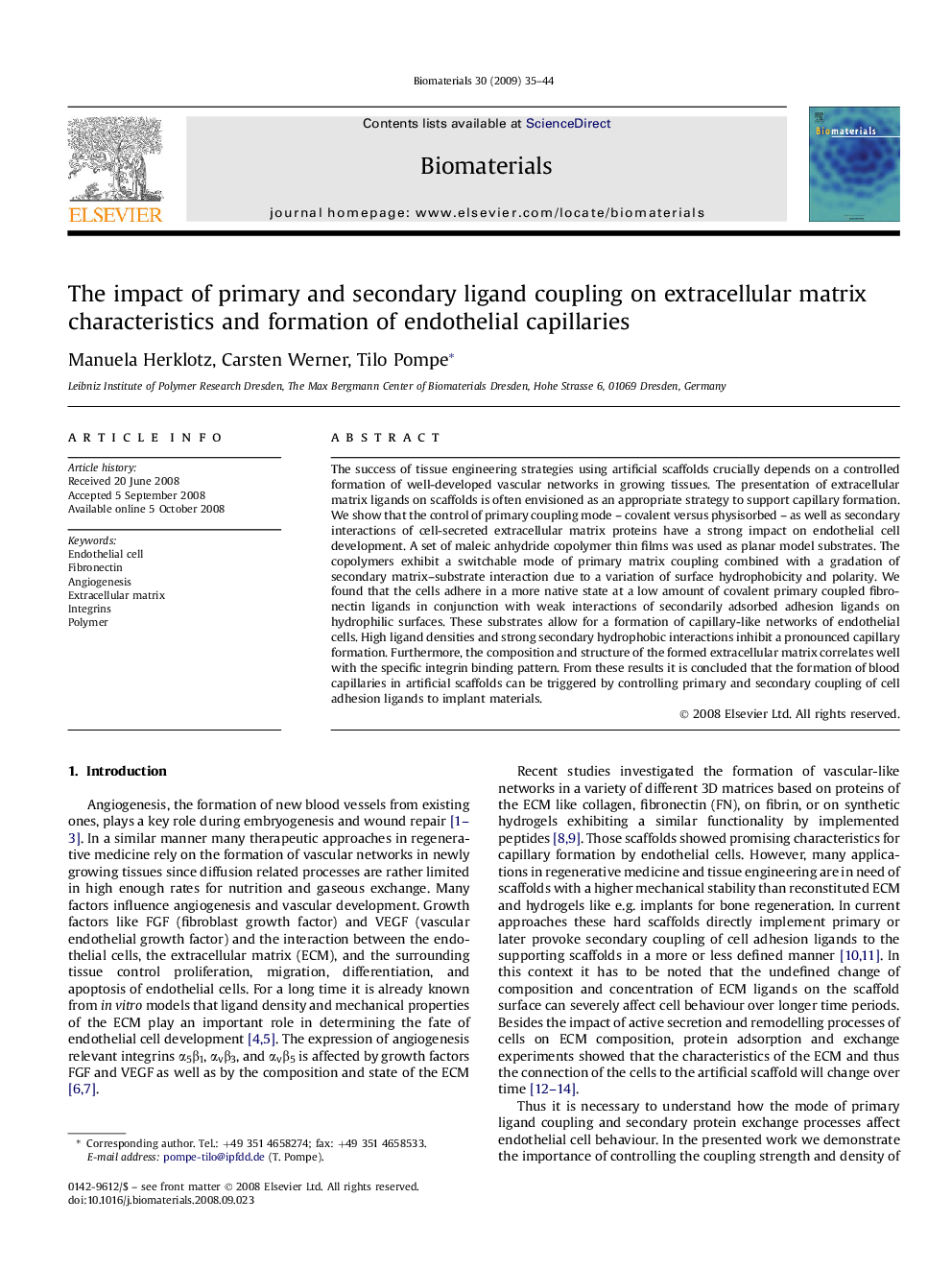| Article ID | Journal | Published Year | Pages | File Type |
|---|---|---|---|---|
| 9522 | Biomaterials | 2009 | 10 Pages |
The success of tissue engineering strategies using artificial scaffolds crucially depends on a controlled formation of well-developed vascular networks in growing tissues. The presentation of extracellular matrix ligands on scaffolds is often envisioned as an appropriate strategy to support capillary formation. We show that the control of primary coupling mode – covalent versus physisorbed – as well as secondary interactions of cell-secreted extracellular matrix proteins have a strong impact on endothelial cell development. A set of maleic anhydride copolymer thin films was used as planar model substrates. The copolymers exhibit a switchable mode of primary matrix coupling combined with a gradation of secondary matrix–substrate interaction due to a variation of surface hydrophobicity and polarity. We found that the cells adhere in a more native state at a low amount of covalent primary coupled fibronectin ligands in conjunction with weak interactions of secondarily adsorbed adhesion ligands on hydrophilic surfaces. These substrates allow for a formation of capillary-like networks of endothelial cells. High ligand densities and strong secondary hydrophobic interactions inhibit a pronounced capillary formation. Furthermore, the composition and structure of the formed extracellular matrix correlates well with the specific integrin binding pattern. From these results it is concluded that the formation of blood capillaries in artificial scaffolds can be triggered by controlling primary and secondary coupling of cell adhesion ligands to implant materials.
